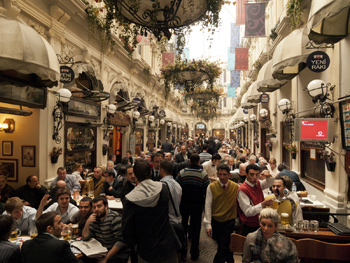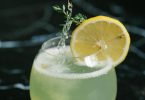Canadean highlights global consumer trends and key consumer targets in alcoholic beverages
There are clear differences between consumers in the BRIC and Non-BRIC regions.
Here in the West, the single most important demographic group for alcohol consumption is Older Consumers, reflecting their dominance of wine consumption and their strong position in the spirits market. Demographic trends in the Non-BRIC region and China mean the older consumer age group will grow in importance.
In contrast young adults are the most important age group in the Beer, Cider & FABs market.
Beer is a popular drink for young adults in India, China and Brazil, whose large young populations will drive high volume growth.
Canadean’s survey of over 20,000 responses combined with market data finds that consumers in traditional beer markets who’ve historically been frequent beer drinkers are broadening their drinks repertoires, increasingly treating themselves with alcoholic beverages other than beer or traditional spirits such as Cider, FABs and Wine.
But young consumers in the BRIC region are turning to beer and drinking fewer specialty spirits, highlighting a divergence in global drinking patterns.
Just as beer heightens its position in non-traditional markets, it’s losing its position in traditional homelands.
Trends driving spirits consumption evolve with age: younger consumers are particularly motivated by ‘fun & enjoyment’ using spirits as a going-out drink for special occasions whereas older consumers are much more likely to be motivated by indulgence, consuming an aperitif before dinner or a whiskey as an evening drink. Interestingly, there’s little difference in the leading consumer trends influencing spirits consumption between the BRIC and Non-BRIC regions.??When considering the importance of the ‘better value-for-money’ trend, it’s generally the case that the cheapest beverages available in developing countries are local specialty spirits. However, it’s also important to bear in mind that not all specialty spirits are cheap: drinks companies are beginning to produce premium specialty spirits designed for both consumption in local markets and for export.??Growth in whiskey, brandy and rum is being driven by the rising consumption of these categories in the Indian market including both domestic brands (at all price points) and high-end foreign imports.??As well as being an overwhelmingly western drink, wine is also overwhelmingly an older person’s drink. It’s increasingly socially acceptable for men to drink wine even without a meal while spirits and mixers are also gaining share.
However fortified wine is growing in popularity among younger consumers: favorable tax regimes mean that fortified wine is one of the cheapest ways for drinkers with limited financial resources to acquire alcohol.
 Limited volume growth in traditional markets means many alcoholic beverage marketers are looking to the Brazi-Russia-
Limited volume growth in traditional markets means many alcoholic beverage marketers are looking to the Brazi-Russia-








